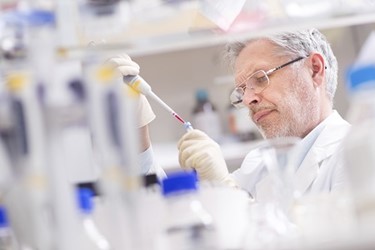The Universal qPCR Reagent
By Gunjan Choudhary and Angela Ra

When quantifying nucleic acids via real-time or quantitative PCR (qPCR), high accuracy and reproducibility are essential. However, factors such as inconsistent pipetting and instrument design (specifically a lack of thermal or optical uniformity across the reaction plate) can lead to variations in fluorescence measurement.
Inconsistent pipetting, an often unavoidable human error, is self-explanatory. A complication that arises with certain instrument designs is illustrated in Figure 1. Specifically, the optical design of some qPCR systems creates illumination and detection light paths that vary for each well of the thermal cycler block. The variation in light path lengths produces different absolute fluorescence measurements for wells that contain the same concentration of a reporter fluorophore. A well with a shorter light path, typically located in the middle of the block, will have a higher fluorescence reading compared to a well with a longer light path, typically located on the perimeter of the block.
Get unlimited access to:
Enter your credentials below to log in. Not yet a member of Biosimilar Development? Subscribe today.
